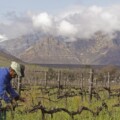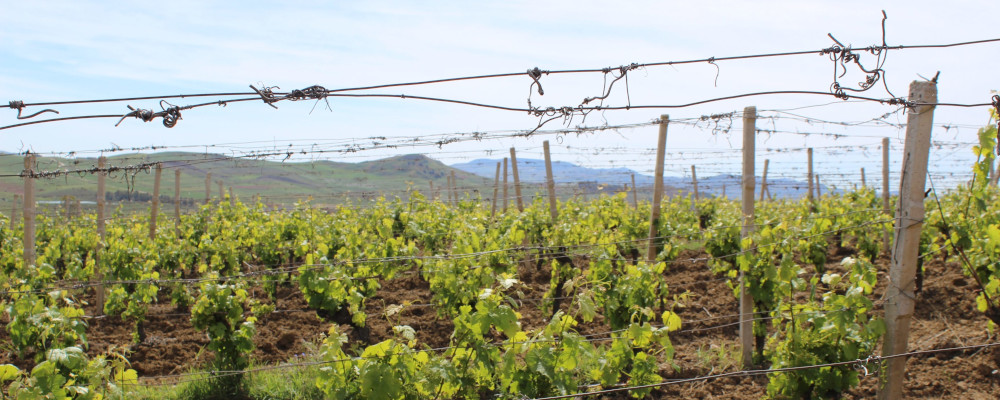Italian Whites (Part One)
In the years before the onset of the COVID-19 pandemic, I travelled (in real life) a fair amount professionally, mostly for wine. I travelled mostly to Europe, mostly to Mediterranean Europe, and mostly to Italy. Sometimes I travelled on my own steam, mixing a little business with tourism and pleasure. But mostly I travelled as part of a press trip, at the invitation of a consortium of wine producers from a particular recognized appellation.
Press trips are almost always busy affairs, one’s hosts want to make the most of one’s time there, and the schedules are packed from early in the morning to late at night with events like tastings, winery and vineyard visits, and organized meals. Still, there is almost always a few hours, here and there, of free time, usually in the late afternoon and early evening between the day’s itinerary and dinner. Some journalists use this time to retire to their hotel rooms to work or nap or call home, but I use them to explore wherever I am.
Wherever I am is very often in a not too big provincial town or small city, like Alba, Verona, Perugia, or Siracusa. A couple of hours is usually just enough time to walk around within the old walls, visit a church or two, and then find a caffè or bar on a piazza for a glass of wine and whatever small free snack that comes with it. The wine will always be white, crisp and refreshing.
What the wine will not likely be, even if I am in Bolzano, is Pinot Grigio. Pinot Grigio’s success in taking over the world of white wine by the glass is laudable, and there are beautifully made wines from it, but Italy has over 400 identified indigenous grapes, about half of which make white wine, so the wine will be something more interesting.
So, on a snowy winter day in Canada, as I surf Google Maps taking an on-screen sentimental journey to sunlit piazze, here are just a few of the delicious white wines of Italy that come to mind and keep me dreaming until it’s time for an aperitivo.
Arneis
Arneis from Piedmont, like Viognier from the Northern Rhône, was nearly rendered extinct before being revived in the 1970s and 80s. Now, nearly every Barolo and Barbaresco producer makes some, often Roero Arneis DOCG, from the eponymous and now prestigious appellation. This is good and bad from a North American consumer’s point of view. It’s good because the wine has become the region’s standard white grape, and it’s being grown made very well by accomplished vintner’s in of Italy’s fanciest wine regions. It’s bad because it’s often hard to come by, at least on retail shelves. I suspect most of it gets bought up by restauranteurs when they order their expensive Barolo and Barbarescos. With a comparably lower acidity than most Italian whites, look for notes on the core fruit spectrum (from apples to pears) and citrus.
Catarratto
Today Sicily is best known for its reds, from everyday Nero d’Avola to rarified Nero Mascelese grown the high altitudes of Mount Etna. It’s easy to forget that the island’s wine exporting history was once all about Marsala. Cattarratto was widely planted across Western Sicily to make the sweet, fortified wine. Among the grapes that are blended to make Marsala, Cattarratto has the potential for much higher yields. When tastes changed in the late twentieth century and Sicilians began making greater quantities of dry white wine, Catarratto was generally disparaged for its workhorse ubiquity, and many winemakers still prefer to tout the more aromatic native white varieties of Grillo and Inzolia. Happily, more and more producers are focussing on premium Catarratto, especially made from its “Lucido” clone, making mineral-driven, fresh, fruit-forward wines. Like Chardonnay, Catarratto can be a strong expression of any combination of terroir, viticulture, and vilification. Look for crisp, stainless steel elevated ones, with notes that range from lemony citrus, through peachy stone fruit, or even tropical fruits.
Falanghina
A fresh Falanghina reminds me of the lemon groves of Amalfi and the vibrant seafood of the Tyrrhenian Sea. Some of the best ones, though, come to the inland Sannio Valley, northeast of Naples. Like most Italian whites, Falanghina is rapidly transforming from bulk wine, of the sort that might come out of a tap at a taverna, to a fine one, as co-operatives, like La Guardiense in Sannio, move from an emphasis on quantity to quality. Grown in Campania’s volcanic soils, good Falanghina expresses a touch of saline mineralogy and fresh lemon to bitter orange citrus notes that reach out from some weightiness on the palate.
Friulano
I have never been to Friuli, and apart from a handful of tasting over the years, have only discovered Friulano by trial and error at the store or off a wine list, but I have yet to be disappointed. Friulano whites are, in my mind, the least aromatic and most fruit-forward of the wines from this very northeast corner of Italy that borders Slovenia. Still, the good ones often have a floral character to the nose and a slight almond bitter finish that sandwiches big stone fruit notes. A well made Friulano, that sings on the mid-palate, is a bit like a vinous meal unto itself, though like all Italian whites it will do nicely with a salty snack.
Trebbiano Spoletino
In gastronomic circles, the picturesque medieval hill town of Spoleto, in Umbria, three-quarters of the way from Rome to Perugia, may be best known for the quality of its locally grown and made olive oil. But in wine circles, it’s known for lending its name to a grape the locals will emphatically tell you is not to be confused with the commonplace Trebbiano Toscana. In any event, grown on only 200 hectares of vines, Trebbiano Spolentino, like Catarratto, can be made to varying styles. The ones I seek out are (of course) a little pricier, and have had some time in oak. The result can be like a rich yet fresh white Burgundy, like Meursault with enough heft to pour through multi-course lunch, with plenty of fruit to stand up to grassy, bitter, or peppery olive oil.
In Italian Whites Part 2, I will take a quick look at five more varieties: Cortese, Pecorino, Pinot Bianco, Suave, and Vermentino.
Recommended for You

There’s more to South African wines than meets the eye

Malcolm Jolley: Zeal of the convert: How South Africa’s signature wine won me over

Malcolm Jolley: No bad wines: Alto Adige region combines the best of Italy and Germany

Malcolm Jolley: Why critics have stopped whining about bad wine





Comments (0)